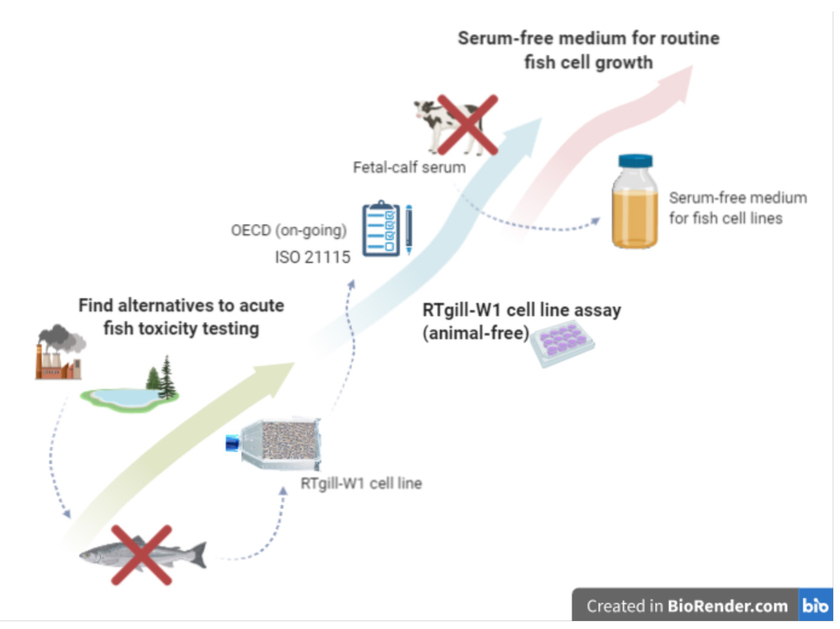Department Environmental Toxicology
Nutritional requirements of fish cell lines – development of a serum-free culture medium (L-15Plus)
Manmade chemicals have become an essential commodity in our daily lives, from personal care to medicine and agriculture. Regulators require companies to conduct safety testing because, despite their benefits, such chemicals may also pose risks to human and environmental health. Environmental risk assessments still heavily rely on tests with fish. To replace such fish tests, we are developing strategies and assay procedures based on permanent fish cell lines of rainbow trout (Oncorhynchus mykiss), a key species for environmental protection. The most advanced procedure is the RTgill-W1 cell line assay to predict fish acute toxicity, which has already undergone several validation steps; it has recently been accepted as ISO guideline (21115) and been included in the OECD test guideline development programme. Yet, while these advances pave the way to replace fish, the routine culture of these cells and certain chemical exposure assays still require fetal calf serum to grow the cells. It is now time to eliminate the need of this last animal-derived component for fish cell culture and to move not only to fish- but rather to completely animal-free testing. To achieve this aim, we propose a systematic screening approach that will allow us to rapidly test and identify essential nutritional factors for fish cell proliferation. The broadly used and well accepted fish cell culture medium, Leibovitz’ L-15, will be used as a base and supplemented to obtain a serum- and animal-component free medium: L-15Plus.
Funding
Swiss 3 R Competence Centre



